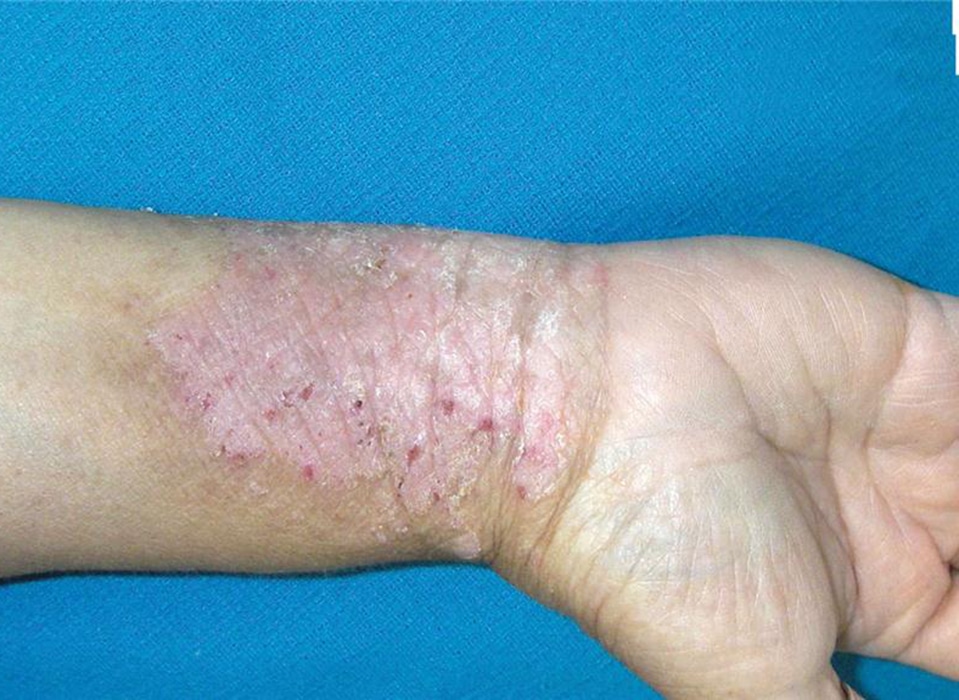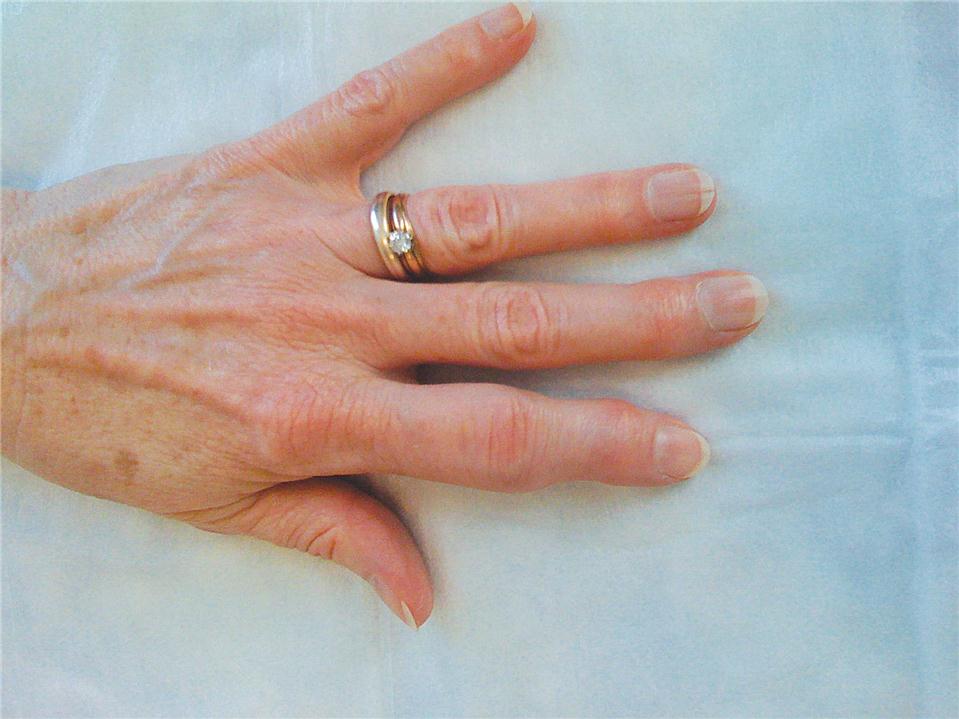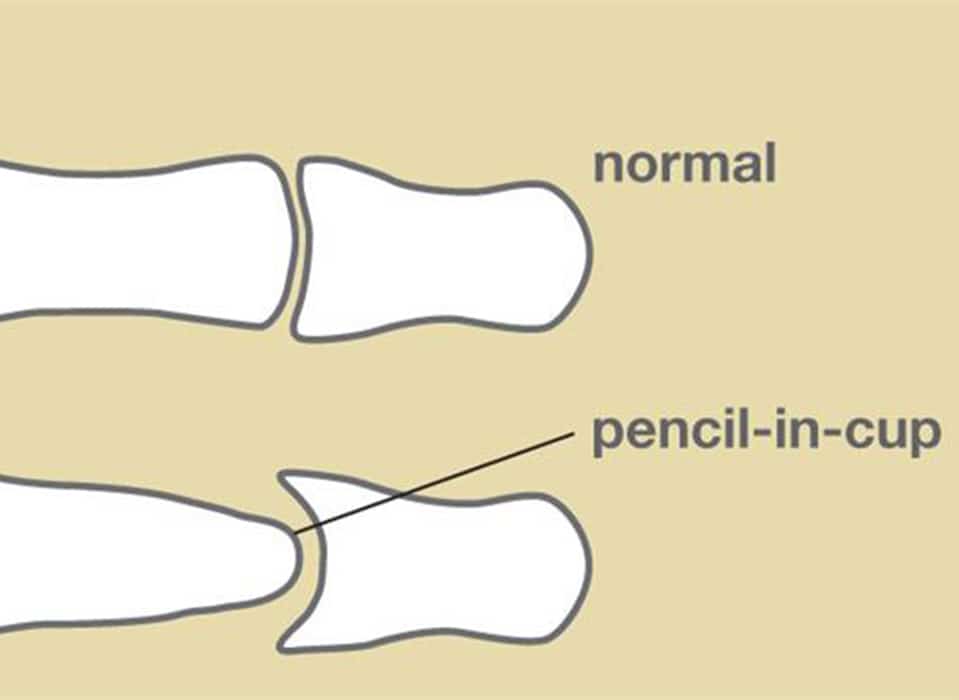Description
AnatomyHello
CausehELLO
SymptomsHello
The changes in the joints with psoriatic arthritis are a lot like those in rheumatoid arthritis. These symptoms can include:
- Red and swollen joints
- Joints that sometimes feel warm
- Decreased joint motion and stiff-feeling joints
With this condition, the hands may not be affected equally. It may be hard to tell psoriatic arthritis from other types of arthritis because most types of arthritis have symptoms of stiffness, swelling, and pain. In psoriatic arthritis, the swelling often affects the whole finger but more at the middle joint (figure 2). There may be pitting, ridging or crumbling of the fingernails. The joint at the end of the finger may become deformed (figure 3). Other parts of the hand and wrist are not usually affected.
Doctor Examination
Psoriatic arthritis is suspected when people have psoriasis and develop problems with their joints. The doctor will mainly look at and feel the hand and look at x-rays. X-rays may show loss of the normal shape of the bone, mainly at the end joint. X-rays may also show swelling around the bone, and the space between the bones may become narrow. The bones may fuse together at a joint. There is no special blood test to find out if one has this arthritis. A piece of skin can be removed to help find out if a person has psoriasis.
Treatment
Nonsurgical Options
There is no cure for psoriatic arthritis, but there are medications available to help lessen swelling, redness, and pain to keep the hands functioning as well as possible. Different medical specialists usually work together to help with the treatment of this arthritis, including physicians and therapists.
Surgical Options
Surgery may help treat the problems of psoriatic arthritis. The type of surgery needed depends on the problems one has with use and pain. A hand surgeon will help guide you to the best treatment for your particular concerns.



